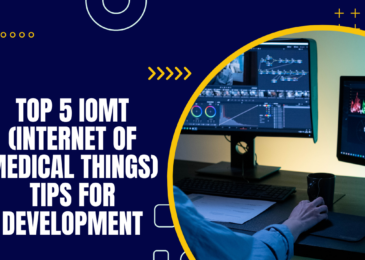From the Fitbit to Amazon Alexa, IoT (or the Internet of Things) has begun to revolutionize the way society makes use of technology and data. IoT essentially refers to the connectivity between different pieces of technology, resulting in a system made up of any number of different gizmos and gadgets, each producing data which can be monitored by the user at any point in time. A lot of IoT technology is currently aimed at the consumer market, like wearables and smart-home technology. However, the manufacturing industry is looking to benefit from IIoT, or the Industrial Internet of Things, which is sure to make big waves in the years to come.
IIoT: The Next Industrial Revolution
By leveraging IoT technology to get machines “talking” to each other at every level, manufacturers are looking to monitor the entire supply chain 24/7 in order to keep human beings in the loop at all times. Thanks to the advent of big data, wirelessly transmitted analytics can allow users to swiftly respond to market changes, adapting the production process to suit new conditions.
IIoT sensors can also alert users to any errors or risk of malfunction in the production line, for instance allowing a robotics technician or an electromechanical technician to perform maintenance duties before damage occurs. This is a world apart from the pre-IoT world of the ‘90s when a PLC driven robot could only take actions based on information pulled from local sensors.
Today, self-monitoring robots can schedule maintenance checks at ideal times based on their own performance and use-times. This means that no time is wasted checking up on machines that don’t need tune-ups. Furthermore, technicians don’t have to interrupt a machine at its busiest time. As such, if implemented correctly, IoT adoption for industrial uses can make manufacturing a much more efficient process, driving up productivity and bringing down overall costs.
IIoT Use Cases
It’s natural that some industrialists may be hesitant about plunging head-first into this new form of connectivity, especially given that retrofitting existing technology with IIoT sensors can be initially rather costly and complex. That said, it bears to keep in mind that IIoT can be successfully implemented at many different levels in the production process, and doesn’t necessarily have to be done all at once. In fact, it’s important to think about how to use IIoT in a way that best suits a factory’s specific conditions and production line.
Process automation will undoubtedly be of use to more than one type of manufacturer. By incorporating many low-maintenance sensors across various machines, users can keep an eye on many aspects of production at any point in time. Should anything go awry, detailed logs can provide transparency and accountability at every level. Users can also quickly react to any issues before too many products are damaged, which is always a risk in unmonitored situations.
Logistics tracking is another important use-case scenario for IIoT technology. Food manufacturers, for instance, can keep records on their products at all times, monitoring things like truck temperature at every step of the transportation process. This is particularly useful, given that the FDA has recently updated its rules regarding transparency and food safety.
Component stock tracking involves incorporating many low-cost, easily-maintained sensors throughout a warehouse, and can be useful for those looking to have improved inventory records and control. This may be particularly useful for proponents of the Just-In-Time model pioneered by Toyota, as 24/7 automated wireless communication allows warehouses to convey data to a central controller, and manufacturers can seamlessly provide extra stock so that warehouses never go empty.
Getting Ready for Automation
These are of course only some examples of how IIoT can be adopted into the manufacturing process. Each industry has its own requirements, each product its specificities, which need to be considered prior to undergoing the digitization process. However, there is no doubt that the future of manufacturing and automation lies in leveraging the Internet of Things. It is simply a matter of when.
In the meantime, factories can start to prepare for the inevitable future by looking into how to overcome some of the hurdles of adopting IIoT technology. Cybersecurity is one of the biggest concerns for businesses at all levels, but especially for those making use of big data and cloud connectivity. Potential vulnerabilities need to be assessed from the get-go, and custom solutions will more than likely need to be designed to suit individual needs.
Companies may also need to look into how they will organize their finances, given that incorporating this new technology into the production process can take a rather large amount of initial investing. As an aside, investment does not only include the actual purchasing of equipment. Education is an important factor in the success of making technological upgrades.
The shortage of skilled workers with technical know-how in areas such as PLC programming, robotics and more is sure to be felt across multiple industries in years to come. Whether companies look to hire university grads or students with a certificate of completion from an online technology course, they need to be ready to have the appropriate training program in place to ensure that workers are able to keep up with technology as it changes and grows. It is clear the future of industry is in automation, and only those who embrace this fate early can prepare for the inevitable transition where the Internet of Things connects all the world.






